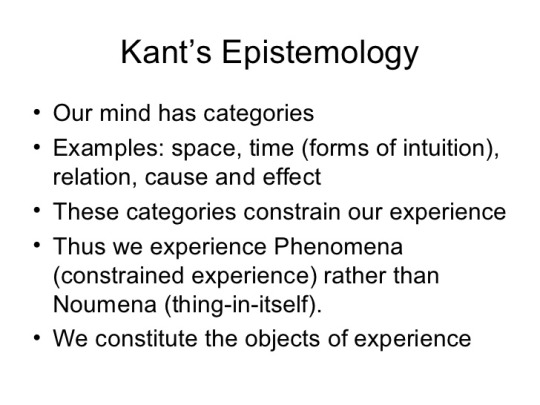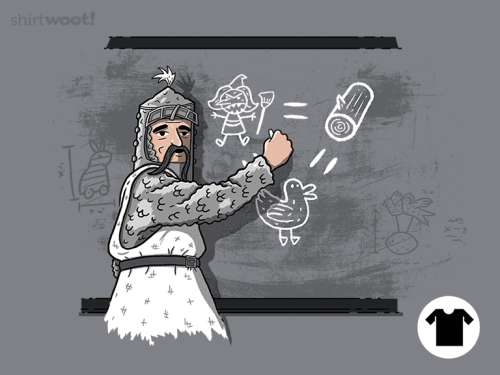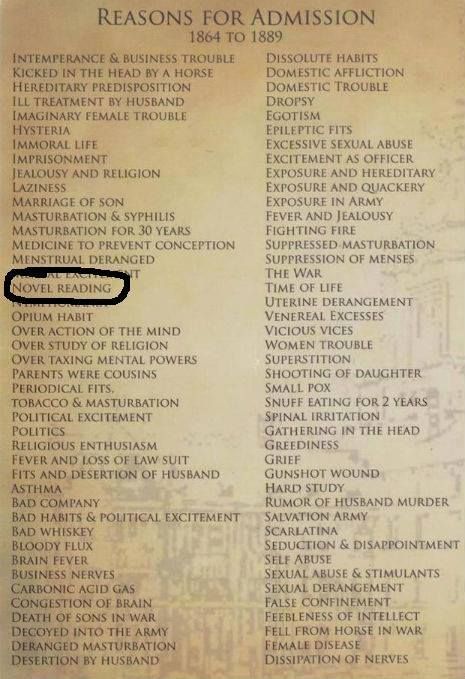#reason
#Today is the last day that I’m using words
They’ve gone out, lost their #meaning
Don’t #function anymore Traveling, leaving #logic and #reason
Traveling, to the arms of #unconsciousness
Traveling, leaving logic and reason
Traveling, to the arms of unconsciousness [Chorus:] Let’s #get unconscious honey
Let’s get unconscious
Let’s get unconscious honey
Let’s get unconscious #worldaidsday2016
#keeppushingonthingsaregonnagetbetter
#alkelinethebody
#blackseedoil
#eliminatemuccus
#naturaldiet
#thetimeisnow⚫️
#fallensoldiers ()
Post link
“If an action or utterance is appropriate, then it’s appropriate for you. Don’t be put off by other people’s comments and criticism. If it’s right to say or do it, then it’s the right thing for you to do or say.”— Marcus Aurelius, Meditations (5.3)
I tell you, even a half-dead man hates to be alive and not be able to see any sense to it.
The Sirens of Titan
Kurt Vonnegut
I tell you, even a half-dead man hates to be alive and not be able to see any sense to it.
The Sirens of Titan
Kurt Vonnegut
I tell you, even a half-dead man hates to be alive and not be able to see any sense to it.
The Sirens of Titan
Kurt Vonnegut
I tell you, even a half-dead man hates to be alive and not be able to see any sense to it.
The Sirens of Titan
Kurt Vonnegut
Soulmate AU where Person A and Person B hate each other with heart’s content, but when one of them goes missing, they realize how much they need each other, and fight to reach each other.
Beyond the Enlightenment Rationalists:
From imaginary to probable numbers - I

Imaginary numbers arose in the history of mathematics as a result of misunderstanding the dimensional character of numbers. There was a failure to acknowledge that numbers exist in a context of dimension. This has earlier been addressed at length.[1] Simply put, numbers exist always in a particular dimensional context. Square numbers pertain to a context of two dimensions and therefore to a plane, not a line. Square roots then ought justly reference a two-dimensional geometrical context rather than the linear one mathematics has maintained ever since mathematicians of the Age of Enlightenment decreed it so. Square roots contrary to the way mathematics would have it can neither exist in nor be found in any single line segment, because they do not originate in the number line but in the two-dimensional square.
Algebra, not geometry, provided the breeding ground for imaginary numbers. They were given a geometric interpretation as an afterthought only, long after the fact of their invention. Rationalist algebraists, feeling compelled to give meaning to equations of the form b2 = -4 came up with the fantastic notion of imaginary numbers. Only indirectly did these grow out of nature, by way of minds of men obsessed with reason.[2]
Descartes knew of the recently introduced square roots of negative numbers. He thought them preposterous and was first to refer to the new numbers by the mocking name imaginary, a label which stuck and which continues to inform posterity of the exact manner in which he viewed the oddities. It is one of the ironies of history that when at last a geometrical interpretation of square root of negative numbers was offered it involved swallowing up Descartes’ own y-axis. Poetic justice? Or ultimate folly?
Had the essential dimensional nature of numbers been recognized there would have been no need to inquire what the square root of -1 was. It would have been clear that there was no square root of -1 nor any need for such as +1 also has no square root. As linear numbers, neither -1 nor +1 can legitimately be said to have a square root. Both, though, have two-dimensional analogues and these do have square roots, not recognized as such unfortunately by the mathematics hegemony.[3]
In the next post we will look at a comparison between imaginary numbers, which were formulated in accordance with this misconstrual about how numbers relate to dimensions, and probable numbers which grow organically out of a consideration of how numbers and dimensions actually relate to one another in nature.[4] The first of these approaches can be thought of as rational planning by a central authority; the second, as the holistic manner in which nature attends to everything, all at once, and without rational forethought.
(continuedhere)
Image: A drawing of the first four dimensions. On the left is zero dimensions (a point) and on the right is four dimensions (A tesseract). There is an axis and labels on the right and which level of dimensions it is on the bottom. The arrows alongside the shapes indicate the direction of extrusion. By NerdBoy1392 (Own work) [CC BY-SA 3.0orGFDL],via Wikimedia Commons
Notes
[1] See the series of about nine posts that begins here.
[2] The Rationalists missed here a golden opportunity to relate number and dimension by defining square root much too narrowly. They seem to have been so mesmerized by their algebraic equations that they failed to pursue the search into deeper significance pertaining to essential linkages between dimension and number that intuition and imagination might have bestowed.
[3] As Shakespeare correctly pointed out, a rose by any name would smell as sweet. Plus one times plus one certainly equals plus one but that has nothing to do with actual square root really, just with algebraic linear multiplication. Note has often been made in these pages of the difference between mathematical truth and scientific truth. Whereas mathematics demands only adherence to its axioms and consistency, science requires empirical proof. Mathematics defined square root in a certain manner centuries ago, and has since been devoutly consistent in its adherence to that definition. In so doing it has preserved a cherished doctrine of mathematical truth, as though in formaldehyde. It has also for many centuries contrived to be consistently scientifically incorrect. The problem lies in the fact it has converted physicists and near everyone else to its own insular worldview.
[4] For an early discussion of the probable plane, potential dimensions, and probable numbers see here.
© 2016 Martin Hauser
Please note: The content and/or format of this post may not be in finalized form. Reblog as a TEXT post will contain this caveat alerting readers to refer to the current version in the source blog. A LINK post will itself do the same. :)
Scroll to bottom for links to Previous / Next pages (if existent). This blog builds on what came before so the best way to follow it is chronologically. Tumblr doesn’t make that easy to do. Since the most recent page is reckoned as Page 1 the number of the actual Page 1 continually changes as new posts are added. To determine the number currently needed to locate Page 1 go to the most recent post which is here. The current total number of pages in the blog will be found at the bottom. The true Page 1 can be reached by changing the web address mandalicgeometry.tumblr.com to mandalicgeometry.tumblr.com/page/x, exchanging my current page number for x and entering. To find a different true page(p) subtract p from x+1 to get the number(n) to use. Place n in the URL instead of x (mandalicgeometry.tumblr.com/page/n) where
n = x + 1 - p. :)
-Page 306-
A Short Philosophical Aside

The scrupulous 3-dimension world we humans inhabit is in fact biological, not physical, in origin. Its limitations are determined by our specific sensory, motor and mental apparatus and abilities. It only hints at the real world, and while doing so it combines some highly erroneous observations as well. Molluscs and insects and arachnids all have a very different perspective of their environment. We would find discomfort in the world view of an octopus, as we do in the quantum world view.[1][2]
Dimension is a term laymen toss about haphazardly. Mathematicians and physicists have a more precise interpretation concerning dimension. For them, any independent parameter constitutes a separate dimension. But when it comes down to the nitty-gritty, what if anything can truly be separate and independent? Those are both relative terms. Nothing that exists is really fully isolate and independent. That is one of the substratal premises from which mandalic geometry evolves: relationships invariably exist. And relationships can always change. Mandalic geometry therefore is a geometry of process - a spacetime geometry, not one of space alone.
For those who created the primal I Ching relationship was considered a fundamental aspect of reality. When they thought of dimension - - - and they did, in their own way - - - relationships were always involved. Flash-forward a few thousand years - quantum mechanics accomplishes much the same with its view of interacting particles in continual motion, ever-changing, and incessantly forging transient effective links with numerous other particles of similar and different type under the influence of various fields of force.
Kant thought that human concepts and categories determine our view of the world and its laws. He held that inborn features of our minds structure our experiences. Since, in his view, mind shapes and structures experience, at some level of representation all human experience shares certain essential operational features. Among these according to Kant are our concepts relating to space and time, integral to all human experience. The same might be said about our concepts of cause and effect.
Kant further asserts that we never have direct experience of things, referred to in his writings as the noumenal world. All we experience is the phenomenal world that is relayed to us by our senses. Kant views noumena as the thing-in-itself or true reality and phenomena as our experience or perception of that thing, filtered through our senses and reasoning. According to Kant science can be applied only to things that can be observed and studied. The entire world of noumena is beyond the scope and reach of science. As an heir to Enlightenment philosophy Kant respects the value of reason but believes the noumenal world to be beyond its scope and reach. So are we fated then never to experience the noumena directly? Not by a long shot. Kant claims the noumena to be accessible but only by intellectual intuition without the aid of reason.[3]
In the world of phenomena nothing is self-existent. Everything exists by virtue of dependence on something else. Point to something, anything at all, that refutes that view and I’ll tell you you’re out of your mind - and in the noumenal world. What, pray tell, are you doing there and how did you get there anyway? If you can clearly communicate the how I may give it a try myself.[4]
Image:
One of a set of illustrations by Emma V. MooretitledNoumena - Collages © Emma V Moore 2013 courtesy of the artist. More of her exceptional art can be found at http://www.emmavmoore.co.uk. Follow also on Bēhance Please do not remove credits.
Notes
[1] The world view granted us by our inherited biologic capacities has been millions of years in the making. Indeed. But that makes it still not a whit truer than had we groped it only yesterday. Evolution seems to have sacrificed a full immersive sense of reality to grant a greater degree of interoperability essential to dealing with vicissitudes of a material world and confer durability within that domain. The quest after true apprehension we feel impelled to pursue is a siren not without danger.
“The search for reality is the most dangerous of all undertakings, for it destroys the world in which you live.”
-Nisargadatta Maharaj
[2] Regarding the origin and transformations of the word “scrupulous”:
Scrupulous and its close relative “scruple” (“an ethical consideration”) come from the Latin noun scrupulus, the diminutive of “scrupus.” “Scrupus” refers to a sharp stone, so scrupulus means “small sharp stone.” “Scrupus” retained its literal meaning but eventually also came to be used with the metaphorical meaning “a source of anxiety or uneasiness,” the way a sharp pebble in one’s shoe would be a source of pain. When the adjective “scrupulous” entered the language in the 15th century, it meant “principled.” Now it also commonly means "painstaking" or “careful.” [Source]
Sad to say, this fascinating word that so successfully wended its way through several related incarnations in a number of different Indo-European languages prior to its appearance in English, c.15th century, appears to be passing out of usage among English speakers in modern times. We will likely be left with the occasional utterance of “scruples” but “scrupulous” itself seems destined for oblivion.
Curiously, my election of the word here was not rationally motivated. As I was framing the thought expressed in the paragraph in my mind, the word just appeared out of nowhere and seemed to insist, “I belong here though you may not yet understand why. You really need a word with my complex heritage of multiple meanings here.” And so I went with it, not fully knowing why. Funny thing about it, my rational mind is quite unable now to come up with any other single word that suits as well.
[3] Kant’s epistemology recognizes three different sources of knowlege: sensory experience, reason, and intuition. He views intuition as independent of the other two and the only one of the three with direct access to the world of noumena. This may present as suspect at first, but then how do we explain things like what Einstein did a century ago? Einstein himself has hinted in his writings at the essential role of intuition and imagination in his thinking.

Clickhere for more slides on Kant’s philosophy by William Parkhurst from Introduction to Philosophy Lecture 13, source of the above slide reproduction.
[4] Our human penchant for categorization inevitably leads to dismemberment of holistic reality into an endless number of manifest objects, many of which we no longer recognize as essentially related.
“People normally cut reality into compartments, and so are unable to see the interdependence of all phenomena. To see one in all and all in one is to break through the great barrier which narrows one’s perception of reality.”
-Thích Nhất Hạnh
© 2016 Martin Hauser
Please note: The content and/or format of this post may not be in finalized form. Reblog as a TEXT post will contain this caveat alerting readers to refer to the current version in the source blog. A LINK post will itself do the same. :)
Scroll to bottom for links to Previous / Next pages (if existent). This blog builds on what came before so the best way to follow it is chronologically. Tumblr doesn’t make that easy to do. Since the most recent page is reckoned as Page 1 the number of the actual Page 1 continually changes as new posts are added. To determine the number currently needed to locate Page 1 go to the most recent post which is here. The current total number of pages in the blog will be found at the bottom. The true Page 1 can be reached by changing the web address mandalicgeometry.tumblr.com to mandalicgeometry.tumblr.com/page/x, exchanging my current page number for x and entering. To find a different true page(p) subtract p from x+1 to get the number(n) to use. Place n in the URL instead of x (mandalicgeometry.tumblr.com/page/n) where
n = x + 1 - p. :)
-Page 305-

Eiffel Tower . 7d 10mm f12 iso 100
“Csak egyszer légy ebben az életben jó gyerek!
Ne használd ki azt, hogy én tényleg szerettelek!”
-Elefánt: Sokáig vártalak
Beyond the Enlightenment Rationalists:
From imaginary to probable numbers - I

Imaginary numbers arose in the history of mathematics as a result of misunderstanding the dimensional character of numbers. There was a failure to acknowledge that numbers exist in a context of dimension. This has earlier been addressed at length.[1] Simply put, numbers exist always in a particular dimensional context. Square numbers pertain to a context of two dimensions and therefore to a plane, not a line. Square roots then ought justly reference a two-dimensional geometrical context rather than the linear one mathematics has maintained ever since mathematicians of the Age of Enlightenment decreed it so. Square roots contrary to the way mathematics would have it can neither exist in nor be found in any single line segment, because they do not originate in the number line but in the two-dimensional square.
Algebra, not geometry, provided the breeding ground for imaginary numbers. They were given a geometric interpretation as an afterthought only, long after the fact of their invention. Rationalist algebraists, feeling compelled to give meaning to equations of the form b2 = -4 came up with the fantastic notion of imaginary numbers. Only indirectly did these grow out of nature, by way of minds of men obsessed with reason.[2]
Descartes knew of the recently introduced square roots of negative numbers. He thought them preposterous and was first to refer to the new numbers by the mocking name imaginary, a label which stuck and which continues to inform posterity of the exact manner in which he viewed the oddities. It is one of the ironies of history that when at last a geometrical interpretation of square root of negative numbers was offered it involved swallowing up Descartes’ own y-axis. Poetic justice? Or ultimate folly?
Had the essential dimensional nature of numbers been recognized there would have been no need to inquire what the square root of -1 was. It would have been clear that there was no square root of -1 nor any need for such as +1 also has no square root. As linear numbers, neither -1 nor +1 can legitimately be said to have a square root. Both, though, have two-dimensional analogues and these do have square roots, not recognized as such unfortunately by the mathematics hegemony.[3]
In the next post we will look at a comparison between imaginary numbers, which were formulated in accordance with this misconstrual about how numbers relate to dimensions, and probable numbers which grow organically out of a consideration of how numbers and dimensions actually relate to one another in nature.[4] The first of these approaches can be thought of as rational planning by a central authority; the second, as the holistic manner in which nature attends to everything, all at once, and without rational forethought.
(continuedhere)
Image: A drawing of the first four dimensions. On the left is zero dimensions (a point) and on the right is four dimensions (A tesseract). There is an axis and labels on the right and which level of dimensions it is on the bottom. The arrows alongside the shapes indicate the direction of extrusion. By NerdBoy1392 (Own work) [CC BY-SA 3.0orGFDL],via Wikimedia Commons
Notes
[1] See the series of about nine posts that begins here.
[2] The Rationalists missed here a golden opportunity to relate number and dimension by defining square root much too narrowly. They seem to have been so mesmerized by their algebraic equations that they failed to pursue the search into deeper significance pertaining to essential linkages between dimension and number that intuition and imagination might have bestowed.
[3] As Shakespeare correctly pointed out, a rose by any name would smell as sweet. Plus one times plus one certainly equals plus one but that has nothing to do with actual square root really, just with algebraic linear multiplication. Note has often been made in these pages of the difference between mathematical truth and scientific truth. Whereas mathematics demands only adherence to its axioms and consistency, science requires empirical proof. Mathematics defined square root in a certain manner centuries ago, and has since been devoutly consistent in its adherence to that definition. In so doing it has preserved a cherished doctrine of mathematical truth, as though in formaldehyde. It has also for many centuries contrived to be consistently scientifically incorrect. The problem lies in the fact it has converted physicists and near everyone else to its own insular worldview.
[4] For an early discussion of the probable plane, potential dimensions, and probable numbers see here.
© 2016 Martin Hauser
Please note: The content and/or format of this post may not be in finalized form. Reblog as a TEXT post will contain this caveat alerting readers to refer to the current version in the source blog. A LINK post will itself do the same. :)
Scroll to bottom for links to Previous / Next pages (if existent). This blog builds on what came before so the best way to follow it is chronologically. Tumblr doesn’t make that easy to do. Since the most recent page is reckoned as Page 1 the number of the actual Page 1 continually changes as new posts are added. To determine the number currently needed to locate Page 1 go to the most recent post which is here. The current total number of pages in the blog will be found at the bottom. The true Page 1 can be reached by changing the web address mandalicgeometry.tumblr.com to mandalicgeometry.tumblr.com/page/x, exchanging my current page number for x and entering. To find a different true page(p) subtract p from x+1 to get the number(n) to use. Place n in the URL instead of x (mandalicgeometry.tumblr.com/page/n) where
n = x + 1 - p. :)
-Page 306-
This is a list of reasons for admission to an insane asylum from 1894 to 1889.
“Menstrual derangement” is my other favorite.
Post link
The Sleep of Reason Produces Monsters, from the Los Caprichos cycle by Francisco Goya, 1799
Post link









